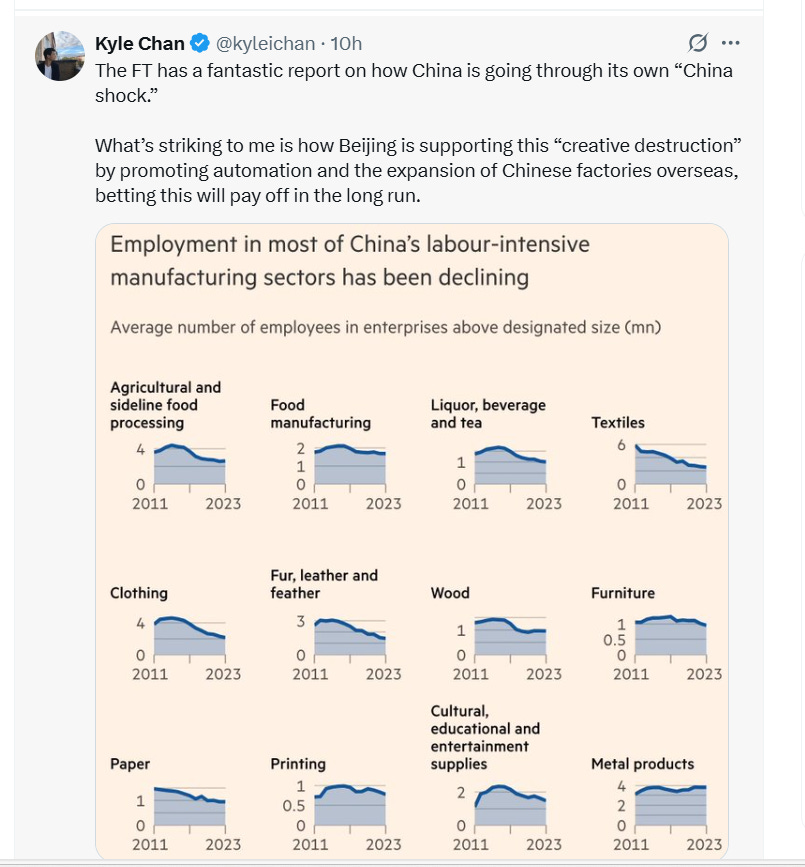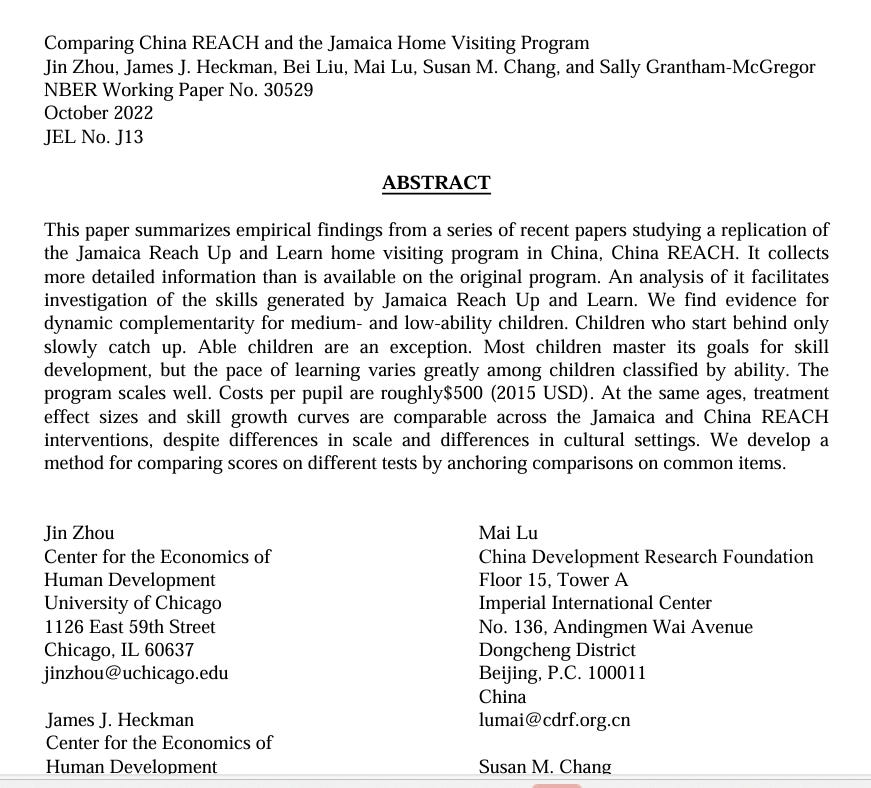Could Deindustrialization Destabilize China?
An Economist's Perspective on China's "China Shock"
Over the last decade, three-star Academic Economists named Autor, Dorn, and Hanson have written numerous influential papers examining how the rise in imports of manufacturing goods from China has contributed to the decline of the U.S. Rust Belt and harmed American Families and communities. The authors take it a step further and quantify how our failure to adapt to this industrial competition has increased demand for public welfare assistance and contributed to the rise of populism and anti-globalization in many parts of the United States.
I am a contrarian. Back in 1999, I published a paper arguing that the decline of steel production in cities like Pittsburgh led to a significant improvement in local environmental quality and contributed to the city's comeback as a “green city.” I am well aware that the educated elites benefit more from this transition.
Why weren’t U.S manufacturing workers better able to adapt to the China Shock? For those who read this Substack, you know that I answered this question in my December 2024 Substack column!
In this Substack, I want to discuss an ironic theme. China now faces its own “China Shock”. It is deindustrializing. In 2025, its people will face the consequences of losing “good jobs for middle-class people”. The Financial Times has just published a lengthy story outlining the facts.
Why is China deindustrializing? Classic comparative advantage arguments can explain why. As wages, land prices, and environmental regulations rise in China, China’s cost advantages (even incorporating CCP subsidies for state-owned enterprises) vanish relative to other locations, such as Vietnam and Thailand.
Have you read my papers here?
or our 2024 Vietnam paper?
So, please permit me to make an analogy.
In 2025, rural people in China without a Big City Hukou are akin to the steelworkers in Pittsburgh in 1982. Both groups of people face the challenge of adapting to a shock that affects their lifetime earnings, their self-esteem and their belief in the system.
The difference is that there are over 500 million rural people in China. These individuals aspired to achieve their version of the “American Dream” by sending a child to a productive city. With manufacturing declining and a weak educational system for rural people in China, these individuals are not equipped with the skills to compete in a service economy under quasi-market conditions (highly subsidized markets).
In my December 2024 Substack post cited above, I argued that Rust Belt residents didn’t receive the education they needed to compete in the modern economy due to the public school monopoly. A similar dynamic is about to play out in Rural China. In rural China, the challenge of skill accumulation is even more acute. Researchers have documented that in many parts of the world, young children are often raised by their grandparents as their parents migrate to urban areas to earn a living.
Stanford’s Scott Rozelle has been a leader in researching this issue. Here is his quote.
The Nobel Laureate James Heckman focuses on what “rules of the game” increase the likelihood that children worldwide will flourish and achieve their full potential.
He has designed an early education program that is being rolled out in rural China.
Summary
China is deindustrializing. This reduces opportunities for rural people and those with limited education. The current rural education system in China, combined with the traditional family structure (where many rural parents do not live with their children), means that young rural adults are underprepared for the high-skilled service economy. As their earnings are depressed and they anticipate low upward mobility rates, how will they respond? In aggregate, what risks does this pose for China? Even if these individuals do not protest, their economic insecurity may lead to reduced marriage rates and lower fertility rates among them. This will contribute to China’s growing demographic challenge as the nation's population ages.
The counter-factual that I want you to consider relates to early education and skill accumulation. If the U.S Rust Belt’s young people in the 1980s (so the 1960s birth cohort) had been educated under Milton Friedman’s proposed rules for private education, would they have been better prepared to adapt to the industrial shifts in demand for workers that took place as U.S producers faced more intense competition?
Similarly, if rural people in China had been educated under James Heckman’s and Friedman’s proposed rules, would they be better prepared to compete in a labor market where more jobs will be in services?
A final thought. If the CCP is worried that deindustrialization could destabilize China, will enormous subsidies for manufacturing SOEs be enacted? Can China’s central government afford this “make-work scheme”? This borders on Keynes’ idea of putting $ in bottles and burying them and having people look for the bottles.










Trump's tariffs are not so bad if he is protecting industries critical to a country's sovereignty and economic well-being of its citizens. Ricardo's comparative advantage doesn't explain why France and Germany both have highly developed and competitive wine and auto industries. Perhaps Krugman's refinement can do so, but regardless, it is a fact that outsourcing costs a country because it drops demand in the labor market.
This is the problem that Keynes tried to solve with government spending supposedly increasing demand for labor until wage equals the marginal disutility of labor.
Didn't work so well. Britain didn't regain export-driven demand for labor, much of that demand for goods had shifted to the US. So, Britain had an excess supply of labor, not too little demand for labor.
And there is the solution. Either Chinese will have to vote with their feet and move somewhere else, or somehow upgrade their skill sets into a still vibrant Chinese industry. Otherwise, they are going to be on public assistance, which suggests there is now a high correlation between outsourcing and public assistance. That would be an interesting paper for a peer-reviewed journal.